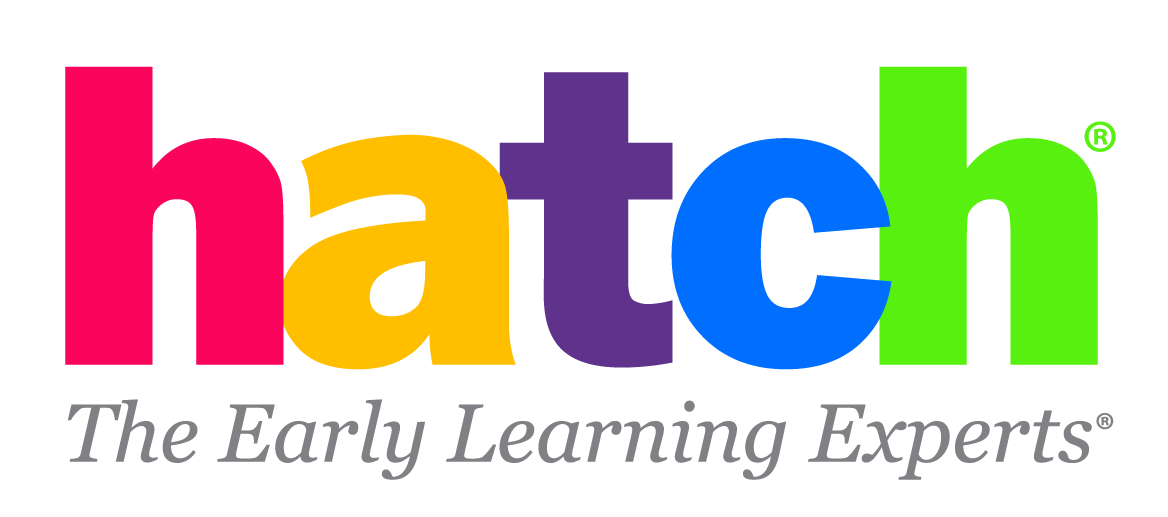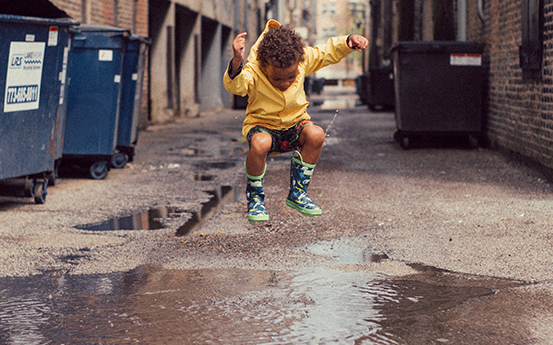Running! Climbing! Jumping! These are important elements for optimal growth and development in young children. Not only are children strengthening bones and muscles, but they are also building their brains! Young children need time for active, full body play every day.
Active play allows children to use what are known as gross motor and gross motor manipulative skills. Gross motor skills are movements that require your whole body, such as walking, running, crawling, jumping, etc. Gross motor manipulative skills include things like throwing, catching, kicking, rolling, and dribbling. Big body movements develop large muscle groups of the body, after which children start developing control over smaller muscle groups. This leads to the development of fine motor skills, such as using a spoon, buttoning a button, or writing with a pencil.
Children under the age of six should be physically active for at least a short period during every hour that they're awake. Here are targets for duration of active play, by age group.
- Infants (up to one year): Daily activity is important. Provide toys and simple objects that encourage them to move.
- Toddlers (1-3 years): At least 30 minutes of adult-organized activity daily plus at least 60 minutes of unstructured physical activity.
- Preschool/Pre-K: (3-5 years): At least 60 minutes of structured physical activity every day in addition to at least 60 minutes of daily unstructured physical activity.
In addition, whenever possible, move active play outdoors no matter the weather; put on sunscreen, bundle up, or throw on some raingear, because outdoor light stimulates the pineal gland, the part of the brain that is vital to keeping our immune systems strong. Spending time outdoors is also associated with improving mood and happiness. As a bonus, children who identify with nature are more likely to become adults who appreciate nature and want to protect the environment.
Ideas for Active Learning
Active play can happen anywhere and doesn’t necessarily require any specialized materials. Check out the ideas below for things you can do inside and outside with your child to engage them in active play!
Infants
Infants experience rapid physical development within the first year of life. From learning to hold up their head to crawling to walking, a lot is happening with their bodies.
- Lay your baby on his tummy to support development of core, back, and neck muscles.
- When your baby is lying on his back, hold toys above him to encourage him to reach and grab the toy.
- Holding your baby in different positions —in your arms, on your hip, or over your shoulder — will activate different muscles.
- Sit your infant in your lap and sing songs and say chants while you move his arms and legs for him.
- Place toys just out of his reach to encourage him to reach and move towards toys.
- Encourage him when he begins to pull-up to standing using furniture. Make sure there is plenty of space around furniture so he can “cruise” (i.e., hold on to the furniture for support as he moves around).
Toddlers
As new travelers, toddlers are often still finding their sea legs! They may waddle, squat, bounce, or take little hops as they experiment with balancing. As they get more comfortable with balancing and how to bend their knees to help with walking and running, they are on the move!
- Encourage marching, dancing, hopping, jumping, and other exaggerated movements.
- Provide your child with a ball to roll or throw. Catching is still hard for toddlers, so roll the ball back rather than throwing it their way.
- Encourage your child to start climbing. (Yes, it’s scary, but it’s good for her!) Let her climb up on the couch or into a chair on her own rather than placing her there.
- Find stairs for her to climb up and down. You will notice that she will lead with the same foot rather than alternate feet as she goes up and down stairs; this is typical and part of the development process.
- Play Stop and Go games to help your child gain confidence with stopping quickly when she is walking or running.
Preschoolers
Preschool-aged children (up to 5-years-old) learn best when there is no official “teaching” of skills because, cognitively, they struggle with the concept of rules in that sense. In addition, it is not essential that younger children throw a ball with the “correct” arm and body movements. Instead, it is important that they are confident about throwing and rolling balls in a variety of ways and distances. As you engage your child in active play, focus on building interest in active and physical play rather than on “technical” skills. Following are some fun ways to do that.
- Throw a ball into a bucket. To increase or decrease difficulty, vary the distance.
- Run with paper streamers.
- Play Catch & Roll games. For example, sit in an open space and roll a ball back and forth. Or toss an age-appropriate ball back and forth.
- Play Follow the Leader and/or Simon Says, encouraging movements like marching, hopping on one foot, skipping, balancing on one foot (and then the other), and so on.
- Create an indoor couch-cushion obstacle course. For example, “Jump over the pillow, crawl under the table, and jump up to touch the ceiling 5 times!”
- Build an obstacle course outdoors using sticks, stones, trees, and/or other landscapes or landmarks.
- Kick and/or throw a playground (or other soft) ball.
- Run from a starting point and stop on a designated point.
- Blow bubbles and trying to catch them before they pop.
- Play Musical Chairs or Duck, Duck Goose
- Dance to action songs (such as “Head, Shoulders, Knees and Toes,” “Five Little Monkeys Jumping on the Bed,” and act out the words.
- Act out different stories and/or nursery rhymes.
- Set up a bowling alley using recyclable bottles or cups, and roll a ball to knock down the pens.
- Play Hide and Seek.
- Jump or hop over a piece of rope or a long piece of string. Count the number of hops or jumps your child can complete in a minute.



